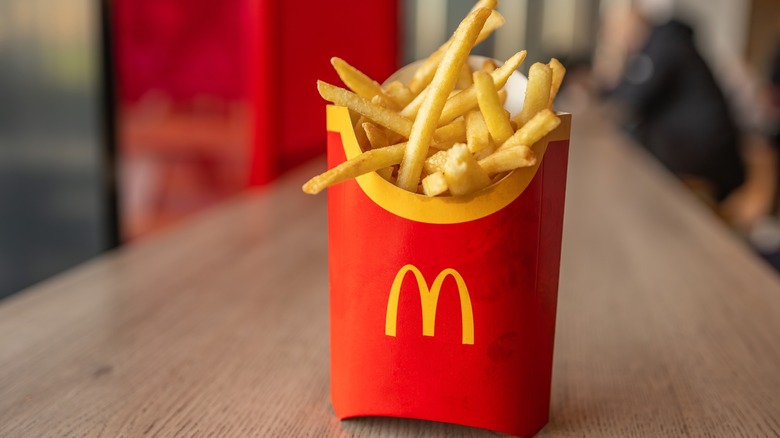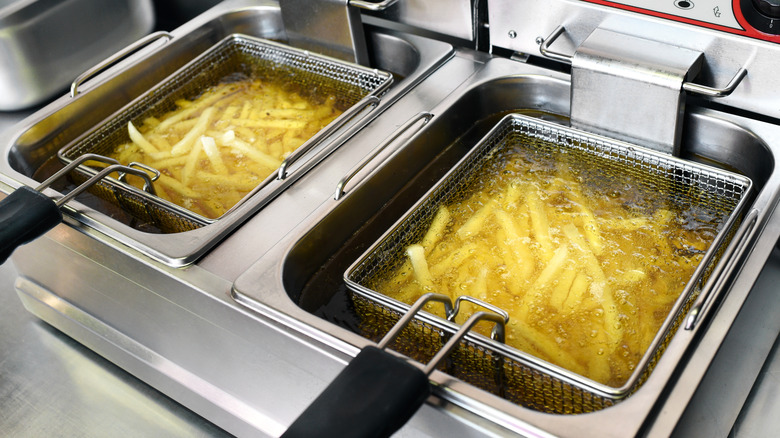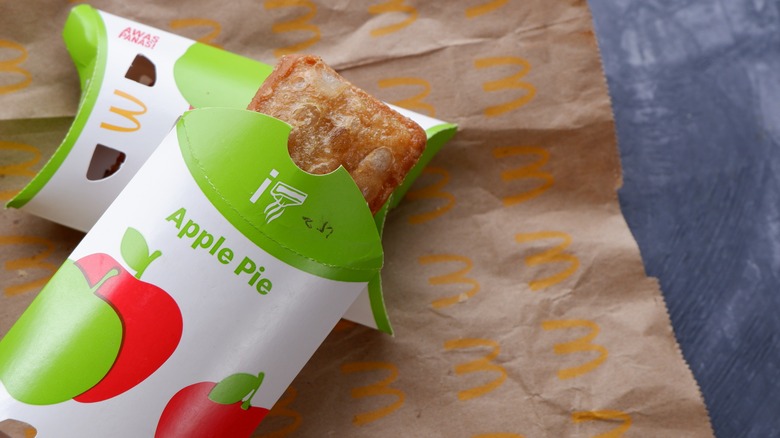What Kinds Of Oil Does McDonald's Use In Its Food?
French fries are delicious no matter where they come from, but even if you're well-versed in all the tips and tricks to making your homemade fries come out crispier, you might find yourself thinking that they're still no McDonald's fries. There's something undeniably unique about the fries from this fast food behemoth, and it's the intersection of a few perfect factors. McDonald's uses Russet potatoes for the perfect texture, then adds in just the right amount of salt, but it turns out that the oil McDonald's uses has a lot to do with the popularity of the food, too.
McDonald's uses several different types of oil in its restaurants, and when it comes to fries, it's a canola blend that's responsible for deep-frying to that perfect crunch. More specifically, McDonald's has said that the frying oil is a blend of non-hydrogenated rapeseed and sunflower oil, but that's a rather new development. If you've ever heard complaints about the fries not being what they used to be, it's true: Previous use of beef tallow was at the heart of a massive McDonald's fry scandal that overhauled the way things at the chain are done.
McDonald's also uses palm oil as an ingredient in some menu items. In 2022, the company announced that 100% of palm oil used was certified as responsibly sourced by the Roundtable on Sustainable Palm Oil, but what does that mean and what, exactly, is it used in?
For frying, McDonald's uses a canola oil blend
While it's definitely possible to make delicious, oven-baked fries at home, McDonald's reaches for the deep fryers. The fries are cut, blanched, pre-fried, and frozen by suppliers, and once they're ready to be served to customers, they're finished off in a canola oil blend of non-hydrogenated rapeseed and sunflower oil.
And it makes sense. Canola oil has a high smoke point of about 400 degrees Fahrenheit, which means that it can be heated to the high temperature needed for fast deep-frying without concerns over the oil burning, breaking down, or imparting any funky flavors or free radicals into the food. It's also got a neutral flavor, which means it doesn't overpower the food that's being fried. Canola oil is also responsible for the texture of McDonald's fries in a big way. Since it can be heated to between 350 and 375 degrees Fahrenheit, fries get crispy on the outside and steam on the inside, which is exactly what you want to happen.
That's a relatively new development in the company's long history. When Ray Kroc bought the franchising rights to McDonald's back in 1954, one of the things that caught his attention was the fries. At the time, they were using an oil mix that was 93% beef tallow, and that didn't change until 1990. The switch to hydrogenated vegetable oil made the fries less tasty and nowhere near healthy, which led to another oil switch in 2007.
Palm oil shows up throughout McDonald's menu
The widespread use of palm oil is extraordinarily controversial, and there are major concerns about everything from the deforestation that's required to grow and source palm oil to the resulting pressure put on a number of endangered species. Palm oil has also been linked to things like child labor and contributions to climate change, but it's still widely used and in many products — not just at McDonald's.
When McDonald's announced in 2022 that 100% of its palm oil was certified by the Roundtable on Sustainable Palm Oil, it was a big deal. That organization oversees the industry to put limits on things like deforestation and to make sure workers aren't exploited. But what products does McDonald's use palm oil for?
Toppings like caramelized onions are made with palm oil, and many chicken products — like the Chicken McBites — also include this type of oil. Biscuits, griddle cakes, pies, cookies, hot fudge and peppermint toppings, ice cream cones, and whipped margarine are all made with palm or palm kernel oil. Since meeting responsible sourcing goals in 2022, McDonald's has reaffirmed its dedication to sourcing sustainable palm oil.


